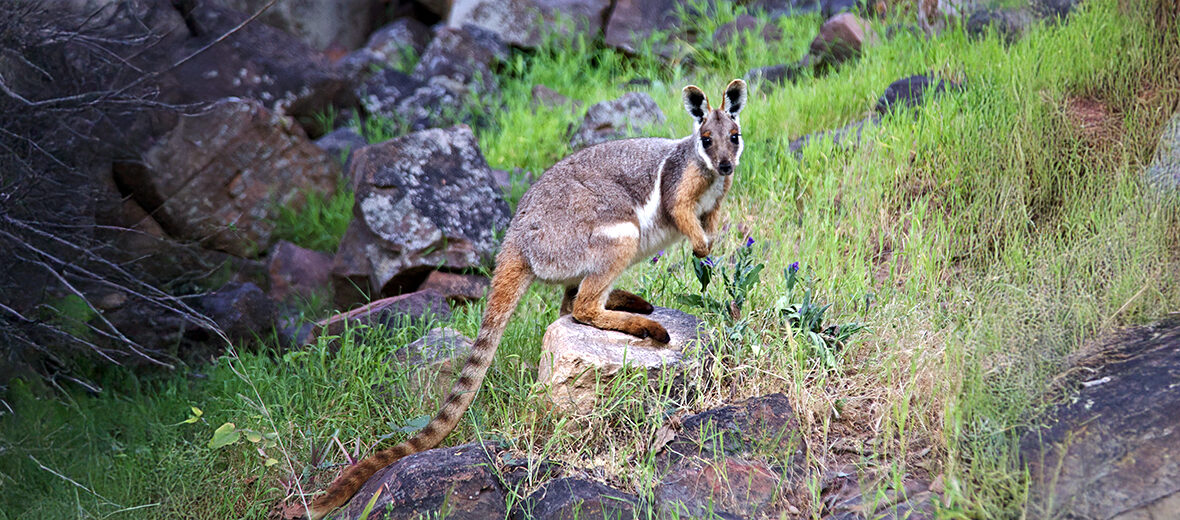
The yellow-footed rock-wallaby, aka ring-tailed rock-wallaby, is a member of the marsupial family that includes kangaroos, wallabies, tree kangaroos, and wallaroos. Unfortunately, they face the threats of habitat loss and destruction at the hands of farming, ranching, fires, and fire management regimens; hunting, for their meat; trapping, for their pelts; and invasive species, including red foxes and European rabbits. They also have to compete with domestic goats and sheep, that over-graze on the plants these wallabies eat. The IUCN lists these critters as Near Threatened.
First the Stats…
Scientific name: Petrogale xanthopus
Weight: Up to 24.25 lbs.
Length: Up to 25.60 inches, plus up to a 27.56 inch tail
Lifespan: Up to 18 years
Now on to the Facts!
1.) They were first described by John Edward Grey in 1855 in the Proceedings of the Zoological Society of London.
2.) These wallabies dwell in western New South Wales, eastern South Australia and isolated parts of Queensland.
3.) Yellow-footed rock-wallabies prefer rough terrain and rocky outcroppings, staying away from human settlements.
4.) There are 2 recognized subspecies: P. x. xanthopus and P. x. celeris.
5.) These rock-wallabies are nocturnal (active at night).
But wait, there’s more on the yellow-footed rock-wallaby!
6.) Grasses and leafs are readily consumed.
7.) In the past, these wallabies had been killed in large numbers for their pelts, primarily through the 1880s – 1920s.
Did you know…?
In 1968, the Arkaroola Wilderness Sanctuary was set up on the 240 square mile Arkaroola pastoral lease, with a primary goal of protecting the yellow-footed rock-wallaby.
8.) Annual surveys of the area, which is now a part of Mutawintji National Park, have indicated that their population is now recovering, having grown progressively since 1995.
9.) Females undergo up to a 33 day gestation that yields a single joey. The joey further develops in their mother’s marsupium (pouch) for up to an additional 7 months.
10.) Besides the red fox, feral cats and dogs also prey on these wallabies.
Now a Short Yellow-Footed Rock-Wallaby Video!
Be sure to share & comment below! Also, check out the Critter Science YouTube channel. Videos added regularly!

Want to suggest a critter for me to write about? Let me know here.
Some source material acquired from: Wikipedia & IUCN
Photo credit: Talexbikes



